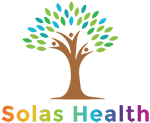
Frankenstein Opioids: A New Danger On The Streets (And Online)
The opioid epidemic, while not reported as often, has not gone away. People of all ages have overdosed when accidentally ingesting fentanyl. However, as fentanyl has become more common and has more dedicated users, new “Frankenstein drugs” threaten to cause another spate of addiction and overdoses for users. What are these drugs, why are they increasing on the street, and how can people spread the word about this new danger for drug users?
Frankenstein Opioids: Protonitazene and Isotononitazine
Nitazine compounds, like protonitazene and isotononitazine, are increasingly found in illicit drug supplies. However, they are relatively unknown to the actual users. Fentanyl is already a highly potent drug, 50-100 times the strength of morphine. Nitazines, known as “Frankenstein opioids,” are even more powerful. This makes them highly dangerous to all drug users. They can be as much as 40 times stronger than fentanyl. And they may be in drugs that the user wouldn’t suspect; fentanyl was initially found in opioids. But today, almost every drug on the market has had a batch tainted with fentanyl, creating a dangerous and toxic combination.
Like fentanyl, nitazines are increasingly tainting street drugs like heroin or cocaine.
Xylazine is another drug that’s become a popular additive to fentanyl. It’s not a drug made for humans- it’s a sedative used for large animals like horses. Xylazine added to fentanyl creates a potent drug called “tranq dope” that’s become popular across the East Coast, especially in Philadelphia. It’s known to cause deadly and irreversible overdoses. People who use the drug are sometimes photographed slumped and unconscious on the streets or repeatedly swaying as they attempt to remain awake. They often have visible, painful, oozing sores, giving them a zombie-like appearance.
Xylazine is also dangerous for another reason; it’s not an opioid; it’s a sedative. Because of this, people who overdose on it may not be revived using opioid reversal drugs like Narcan.
These Frankenstein opioids have the potential to cause a lot of suffering. Drug dealers are driven by greed and are eager to have new “features” – such as new, addictive substances - that may make their clients return. So they aren’t going away anytime soon. People addicted to opioids and other substances take risks they wouldn’t normally due to changes in their bodies and brains. Addiction can be scary and ugly. Knowing these facts, it’s easy to say there is a looming public health disaster.
Poly Drug Use and Frankenstein Opioids
Many people who lose their lives to opioid overdose use more than one substance at a time. Some people take more than one substance because one is prescribed by a doctor, and the other is recreational. For example, pills such as anxiety medications can have a sedative effect. Taking Xanax with another sedative can cause a person to stop breathing. When two or more drugs are taken together, they can interact in ways that amplify or diminish the effects of each drug, leading to unpredictable and dangerous outcomes.
Many people combine drugs that they are prescribed with drugs they use recreationally. There is no way to know the effects of these drugs taken together. For example, combining stimulants like cocaine or meth with depressants like alcohol and benzodiazepines can lead to cardiovascular and respiratory problems, cognitive impairment, and other serious issues. The effects can be unknown for Frankenstein drugs that were never tested on humans.
According to the CDC, there were more than 93,331 deaths from opioids last year, with fentanyl being one of the top causes of overdose deaths. Many opioid overdoses involve multiple drugs, so fentanyl is only listed as a contributing cause. It’s not unusual for someone to accidentally overdose with three or more drugs.
Frankenstein opioids are deadly. They are a problem piling on top of another problem; the public health emergency caused by fentanyl hitting the streets. Education and drug treatment are two of the biggest solutions to the problem.
Educating Drug Users and Families: #OnePillCanKill
The DEA says that six in ten drugs they’ve seized contain fentanyl, but that information is rarely passed on to the buyer. Young people nowadays may be naïve about the drugs they’re buying or the dangers of counterfeit pills. This is why numerous government entities have a campaign for drug users and their loved ones to learn how #OnePillCanKill.
Many people who overdose on fentanyl and Frankenstein opioids think they are taking a different drug. Popular pills such as Oxycontin, Vicodin, Xanax, and Adderall are sold on the illicit market. Often they are not what the dealer claims they will be. Since the pandemic first started, the way that people get and use drugs has changed dramatically. No more phone calls and meeting up; almost all drug deals today are conducted on apps or social media like Instagram, Snapchat, or Signal. Drug dealers switch their account names and other information often. Their apps are encrypted, making them hard for law enforcement to track.
The ease of acquiring drugs such as Adderall, Molly, Oxy or Fentanyl has attracted younger users to experiment. It’s also caused many deaths. Most overdoses nowadays involve fentanyl, and drug users often don’t even realize they are ingesting it. People who use drugs can take steps to reduce harm, such as carrying fentanyl testing strips or Narcan. However, these new Frankenstein opioids can’t be tested for, and just one pill can kill. Now, more than ever, people must be aware of what their teens and other vulnerable loved ones are doing and educate them about the dangers of buying pills online.
Getting Help for Opioid Use Disorder
If you or somebody you love has a problem with opioids, help is available! Opioid use disorder is a treatable disease, and Medication-Assisted Treatment is considered the gold standard. Recovery from fentanyl addiction is more possible than ever with our evidence based treatments.
We can help you start your journey to reclaim your life and feel whole again. Get in touch to learn more about how we can help. We’re here to help you plan your recovery compassionately and discreetly.
If you are in need of help, please call us at: 910-295-7246 or message us.
Categories
News
